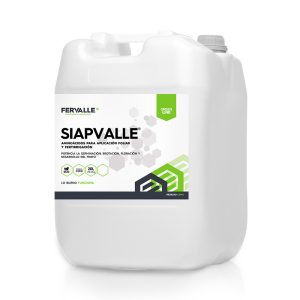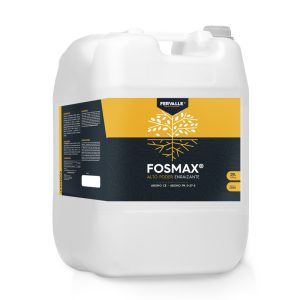CULTIVATION STRATEGY FOR

Watermelon cultivation.
Watermelon is one of consumers’ favorite summer fruits. It belongs to the Cucurbitaceae family, like cucumber, courgette, pumpkin, melon, etc., and is a food rich in vitamins A and B and minerals such as manganese and potassium.
Watermelon can be considered a vegetable because it belongs to the Cucurbitaceae family. However, in Spain we classify it as a fruit since it is all that edible fruit, sweet or acid that is consumed mainly as a dessert.
-

SIAPVALLE®
Powerful Amino Acid with Staggered Energy Contribution -

FOSMAX®
fosmax, Powerful Rescuer, Rooting
» Watermelon plantation
· When are watermelons planted?
Watermelons can be grown between April and May.
·How are watermelons planted?
Watermelons are planted in areas with a lot of light. About 4 seeds are sown together (germination power is not very high) about 2 cm deep and about 30 cm away from the following ones, since the watermelon bush takes up a lot of space. In about 6-10 days the seeds begin to germinate, depending on the weather, soil conditions and the variety.
In areas where the risk of frost is high, the seeds are sown in nurseries under controlled conditions and then transplanted to the field.
» Soil and climate requirements
·Soil
Watermelons prefer slightly sandy soil, rich in organic matter and well drained. These are plants sensitive to waterlogging and sensibly moderated by salinity. Also, pH levels should range between 5.8 and 6.6.
When planting, it is recommended to apply a large amount of compost, peat or manure.
·Climate
Watermelons require a minimum of 6 hours of sun a day for their proper development and growth. However, the shoots must be protected from the sun in case it is very intense.
Therefore, watermelon needs high temperature conditions.
» Care required by the watermelon
·Soil preparation for watermelon cultivation
The preparation of the soil for the cultivation of watermelon is based on:
- Plowing the land well to improve soil aeration and drainage
- Eliminating weeds and control their growth
- Applying fertilisers
- Installing irrigation systems
- Covering the floor with plastic films that maintain the temperature
·Watermelon irrigation
Watermelons need different irrigation patterns depending on their stage:
- At the beginning of the plantation: abundant irrigations of about 20-30 minutes.
- When the plant gains strength: lighter waterings every 2-3 days.
- When the first fruits appear: more abundant irrigations, but also more spaced in time.
The most widely used irrigation system is drip irrigation, with the aim of preventing the leaves from getting wet as they rot easily.
·Watermelon pollination
The flowers of the watermelon bush must be pollinated. It is recommended to place 1 or 2 hives per hectare orpollinate manually.
·Padding
Padding consists of covering the agricultural soil with, generally, a black polyethylene film. It is done to achieve:
- Increasing or maintain soil temperature
- Reducing water evaporation
- Preventing weed growth
- Increasing the concentration of CO2 in the soil
- Increasing fruit quality
·Watermelon pruning
Pruning is done to control plant growth, reduce the number of sprouts and improve fruit development.
- Leaf pruning
This pruning is only recommended if the plants have very old or very large leaves, which make it difficult for them to aerate or reach light.
- Flower pruning
Once their function is complete, the flowers can be a source of disease as they rot easily. Old or damaged flowers will be cut.
- Fruit pruning
When pollination takes place in adverse conditions of temperature and humidity, deformed fruits are formed that must be eliminated.
In addition, it is recommended to leave only one or two fruits per branch.
» Nutrients needed for growing watermelon
Watermelons are not very demanding when it comes to nutrients. They mainly require:
- Nitrogen: It’s an essential element for vegetative growth and fruit formation.
- Phosphorus: It’s necessary in the metabolism of sugars and nucleic acids and in the energetic processes of the plant.
- Potassium: It’s essential as a coenzyme and in protein synthesis, photosynthesis and carbohydrate metabolism.
- Magnesium: It’s constituent of the central atom of the chlorophyll molecule.
- Calcium: Most of its activity is due to its coordination capacity, as it is able to establish stable and at the same time reversible bonds between molecules.
- Sulphur: It’s a key in protein synthesis as it is an important component of some amino acids and coenzyme A.
In addition, the application of micronutrients such as iron, manganese, boron, zinc, copper or molybdenum is also important.
Fertiliser for watermelons
- What fertilisers does watermelon need in its cultivation?
As we have already seen in the previous section, the main components that watermelon fertilizer must contain are nitrogen, phosphorus, potassium, magnesium, calcium and sulfur.
For the organic cultivation of watermelons, organic fertilizers will be applied, such as manure, compost or earthworm humus, as well as those formulated based on algae, minerals or other natural elements.
Some of the fertilizers recommended for growing Fervalle watermelons are Siapvalle or Fosmax.
Siapvalle is a bio-stimulant rich in L-amino acids of animal origin. Its functions include:
- It provides energy to trees
- It increases the production, caliber and homogenization of the harvest
- It chelates soil nutrients and transports them from the roots to the most apical areas
Fosmax has a formulation based on the presence of the polymeric complex (FPC) together with low molecular weight complexed phosphorus, potassium, calcium and micronutrients. The main advantages and benefits of this product are as follows:
- It enables rapid assimilation of nutrients
- It provides higher nutritional bioavailability compared to traditional fertilizers
- It promotes the development of a strong root apparatus
- It improves flowering on the plant
- It improves fruit setting and ripening
»Watermelon harvest
Watermelons are harvested manually about 80-100 days after sowing. Harvesting is done when:
- The curly tendril near the stem dries out completely
- The first leaf above the stem wilts
- When hitting the watermelon the sound is hollow
- When scratching the skin, it is easily separated
- The bottom of the fruit turns yellow




